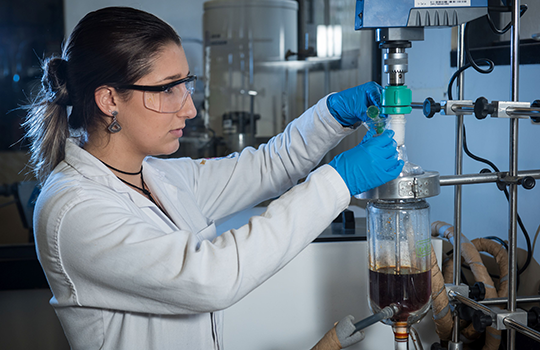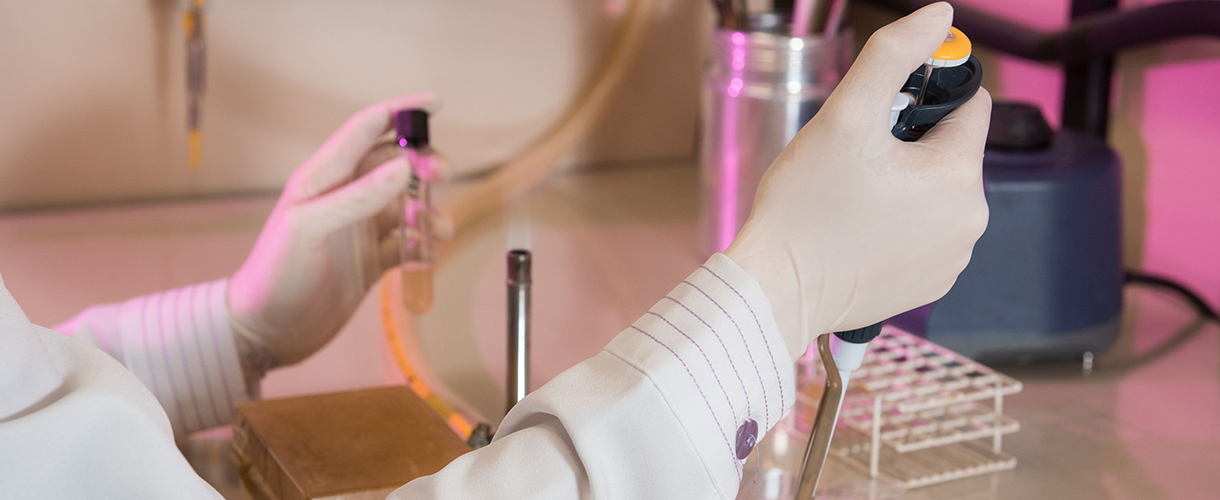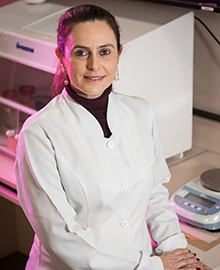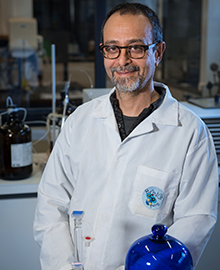Chemical compound to inhibit superbacteria
Resveratrol analog molecules could bring some hope in the fight against an antibiotic resistant superbacteria. A variety of international studies have shown that the substance that is found in black grapes and red wine have bactericidal and antioxidant properties (thus lessening the negative effects caused by free radicals, which are toxic substances produced by the body). An investigation carried out at PUCRS has also proven it to be effective against Acinetobacter micro-organisms, especially Acinetobacter baumannii, which is one of the main agents of infections in hospitals and health stations, as it mostly targets ICU patients.
School of Biosciences professor Sílvia Dias de Oliveira has studied this bacteria extensively, whereas Chemistry professor André Arigony Souto, has synthesized different resveratrol analog molecules. Both researchers have decided to join forces and have been working on synthetic compounds of resveratrol analogs (synthesized in laboratories) in Acinetobacter isolates since 2014.
COMBINATIONS WITH EXISTING DRUGS
Experiments have shown that, within a given concentration, resveratrol analogs are able to stop the growth of Acinetobacter baumannii. Then, other drugs used to treat infections were combined. “By using the compound, we have been able to reduce the concentration of the medications. In some cases, we were able to reverse the resistance to that specific drug”, explains Sílvia. This means that even isolated compounds that adapt to the effect of antimicrobial drugs, are susceptible to them when associated with this resveratrol analog.
Outstanding results have been achieved with polymyxin B, an obsolete and highly toxic antibiotic (which mainly affects the kidneys). It has recently risen back to prominence as a response to the lack of modern drugs to fight Acinetobacter. And to make matters worse: resistance to polymyxin B has been reported in a number of academic investigations, which urges the need for research into other alternatives.
The group has also studied antimicrobial tobramycin because it can be inhaled. “As Acinetobacter causes respiratory infections, we have chosen this target for tests, as we envisioned a useful future for it”, explains Sílvia.
In order to determine the potential effect of antimicrobials, tests were repeated indefinitely. Some isolated bacteria compounds were subject to 50 analysis sessions. A multitude of factors could be held accountable for alterations in the results. Reactions change according to the micro-organism’s isolate under investigation. Differences were so subtle that investigators had to ponder whether it is best to combine the compound and the drug simultaneously or at intervals. The first hypothesis was accepted.
Future investigations will try to unveil the compound’s mechanism of action. The antimicrobials are internalized into many bacterial cells which will then be expelled, thus reducing its concentration in order to remain active. “We anticipated that the substance has a potential inhibitory action, and causes the drug to concentrate, which makes it reach the target more easily”, elucidates the professor.
FUTURE POSSIBILITIES
The next stage, which includes testing in animals, is dependent upon funding for analyses of toxicity and activity. In cells, the product has proven to be beneficial. “It’s cheap to synthesize and we would be able to produce it in large scale”, ascertains Arigony. At the laboratory, the group was able to produce 20 grams of the drug. Both the process and the level of purity remained unaltered. “If it works in an in vivo model and arouses the interest of any industries, we will show that it’ll be easy to produce”, complements he.
Biozeus, a drug development company that works together with pharmaceutical industry company and research institutes, assisted PUCRS in drafting the proposal. In September, the company and other researchers delivered a workshop at PUCRS in order to assess the financial potential of projects.
Undergraduate research students

Chemistry student Natália Cézar: excitement to develop a new drug
Sponsored by Praias, a multidisciplinary research program, accountable to the Office of the Vice President for Research, Innovation and Development, the project features two undergraduate research students, and resources used to acquire supplies. As students work on their experiments, they learn about one another’s areas of expertise. Three pairs of students have joined the program in its previous editions.
“Students can gain a lot from observing different methods! They can see that science is integrative, they can think outside the box. They might be able to explore other possibilities when working in a different scenario”, says Arigony. Natália Cézar, 21, 5th semester Chemistry student, heartily agrees. “A research project provides me with a wonderful scientific experience because I can put in practice everything I have learned as an undergraduate student, and learn something new, not necessarily in Chemistry, but also in Biology, for we work mostly in na interdisciplinary way.” For her, one of the highlights of the project is to participate in a drug development project. “It may be useful to many people. And it is based on the research and tests we have conducted at the laboratories.” The project also features Marina Monteiro, Pharmacy student.
Atop WHO list |
For the first time, in 2017, the World Health Organization (WHO) published a list of antibiotic resistant bacteria, which calls for future research and production of new medications. Twelve families of pathogenic agents appear in the document. In the first of the three urgency categories defined by WHO lie bacteria of the following genus: Acinetobacter, Pseudomonas and Enterobacteriaceae, such as Klebsiella, Escherichia coli, Serratia and Proteus. They can cause serious and often fatal health conditions such as blood infections and pneumonia. In addition to designing new medications, other measures are essential, such as infection prevention actions and awareness to the correct use of existing antibiotics. Source: UN |
The project researchers
Patent applications
The project needs to be published and examined by the National Institute of Industrial Property (INPI) as a condition for the granting of the patent, which will earn it a 20-year protection. INPI’s letters patent certifies that the invention has reached three levels: world novelty (analyzed up to the application date), inventive activity (obviousness) and industrial scale reproduction. Patent protection has also been claimed to The Patent Cooperation Treaty.
Source: PUCRS Technology Transfer Office






